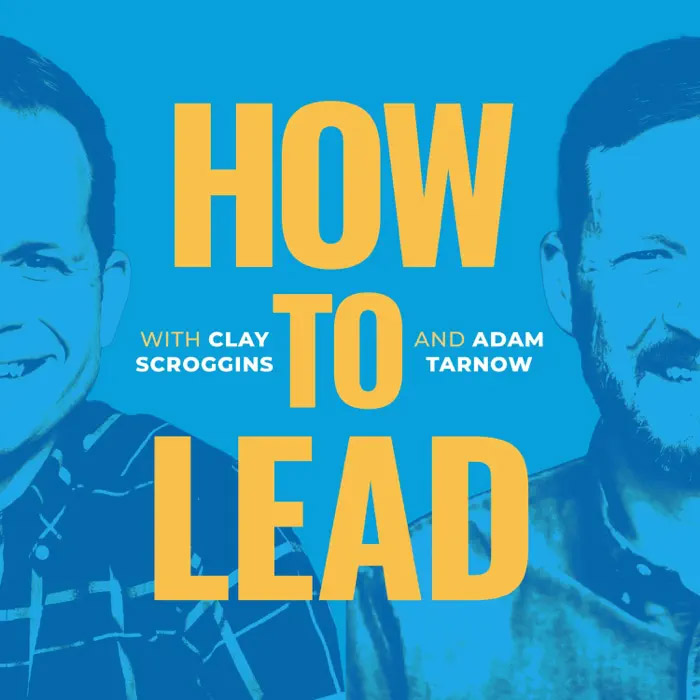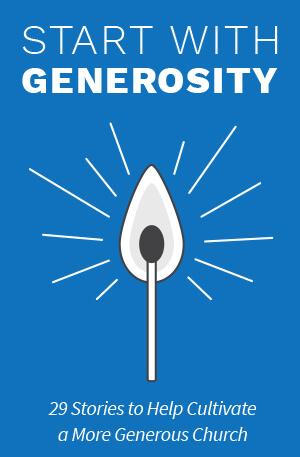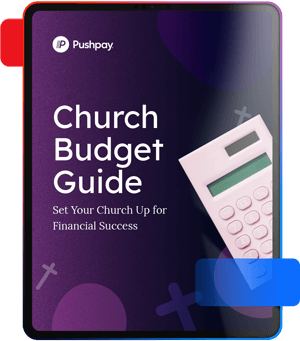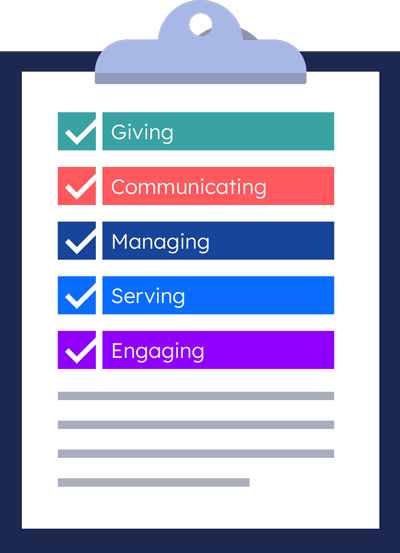Best practices for implementation
Secure leadership buy-in
Gaining the support of church leadership is a crucial first step in successfully implementing digital fundraising tools. Begin by presenting data and case studies that highlight the tangible benefits of these fundraising platforms. Share statistics on increased giving consistency or stories from other nonprofit organizations that have seen growth after adopting similar platforms. This real-world evidence can help address any concerns and build confidence in the decision.
Equally important is aligning the use of online donation tools with your church’s mission and vision. Show how these tools can strengthen stewardship, make giving more accessible to all members, and support the long-term goals of your ministry. When leaders see how these key features empower donors and fuel the church’s broader impact, they’re more likely to champion the initiative.
Develop a rollout plan
A clear and organized rollout plan makes it possible to accomplish a smooth transition to online fundraising platforms. Start by setting a realistic timeline for implementation, with milestones to track progress. For example, you might allocate specific weeks for testing the tool, training staff, and sharing the news with your congregation.
Assign roles and responsibilities to staff and volunteers. This could include appointing someone to oversee technical setup, another to manage donor information and communications, and a team to provide support during the launch phase.
Educate your congregation
Introducing new online giving tools is a learning opportunity for your congregation, and education is key to boosting adoption rates. Host informational sessions or workshops where members can ask questions, see demonstrations, and understand why digital fundraising is being introduced. Use these moments to highlight the ease of use and the benefits for both donors and the church.
Alongside these events, create instructional materials like brochures, videos, or step-by-step guides to walk users through setting up recurring donations or using the donation page. Make these resources accessible on your church’s website and distribute them during services so that everyone has what they need to feel confident using the platform.
Promote across multiple channels
Building momentum for online fundraising efforts requires consistent promotion through diverse channels. Begin by announcing the initiative during services—a personal message from the pastor or leadership team can emphasize the spiritual importance of giving.
Extend your messaging outside of services by utilizing newsletters, social media platforms, and the church website. Share testimonials from members who have already adopted online donation platforms, or create countdowns to the official launch date. An omnichannel approach enables everyone in your congregation to stay informed and excited.
Ease of use
The success of mobile apps and other digital tools depends on how accessible and intuitive they feel for users. Choose a donation tool designed for ease of use to minimize any learning curve. Features like clear navigation, simple prompts, and one-click setup options can make all the difference.
Additionally, offer step-by-step guides tailored to your congregation’s needs. Whether through video tutorials, printable quick-start sheets, or live demonstrations, providing clear instructions helps remove barriers and empowers donors to participate confidently.
Emphasize security and privacy
Reassuring your congregation about the security of their personal and financial information is essential for building trust. Highlight the measures in place to protect their donor data, such as encryption technology, secure servers, and compliance with privacy standards.
Communicate openly about the safeguards built into the online donation platform and address any concerns members may raise. This transparency helps establish confidence. It can, and should, make more people feel comfortable making the transition to digital fundraising.
Integrate with existing systems
For seamless operations, it’s important to make sure your online fundraising tool integrates effectively with your church management software. This integration can simplify tracking recurring giving, updating donor information, and generating reports. The smoother the back-end operations, the more time your church staff will save on administrative tasks.
Additionally, verify compatibility with accounting systems to make sure your financial data is accurately recorded and easily accessible. This not only improves efficiency but also supports transparent financial reporting—a key factor in maintaining trust within your congregation.
By adhering to these best practices, your church can successfully implement digital fundraising tools in a way that engages members, nurtures generosity, and strengthens the foundation of your ministry. Through the use of fundraising software, mobile apps, and intuitive donation forms, your church will create a seamless giving experience that aligns with modern donor behavior and supports your long-term fundraising efforts.
Post-implementation strategies
Gather feedback
Successfully implementing digital giving tools is an achievement, but the process doesn’t end at launch. One of the most valuable steps afterward is gathering feedback from your congregation. Doing so helps you understand how the tools are being received and highlights areas for improvement. Encourage members to share their experiences—both positive and constructive—through casual conversations, church meetings, or one-on-one discussions with leadership.
To get a broader perspective, consider using surveys or feedback forms, either in paper format or online. Ask specific questions about ease of use, accessibility, and overall satisfaction. For example, you could inquire, “How easy was it to set up recurring giving?” or “What features would you like to see improved?” This direct input not only helps optimize the tools but also shows your congregation that their voices are valued in shaping the church’s initiatives.
Monitor and analyze data
Digital giving tools are powerful not just for enabling generosity but also for providing valuable insights into giving patterns and engagement levels. Post-implementation, make it a priority to monitor these metrics regularly. Track data like the number of recurring donors, average donation amounts, and spikes in giving during certain campaigns or events.
Analyzing this information allows your church to identify trends and adjust strategies accordingly. For example, if you notice a decline in monthly giving during summer months, you might consider launching a seasonal campaign to engage donors. Conversely, strong participation in special projects could signal an opportunity to grow that type of outreach.
Continuous promotion
Maintaining the momentum for digital giving requires ongoing reminders and communication. Regularly inform your congregation about the tools available to them, especially during services or in monthly newsletters. Highlighting the convenience and impact of digital giving serves to engage both new and existing donors.
One effective way to keep excitement alive is by sharing success stories or milestones achieved through digital giving. For instance, did the platform help fund a new community program? Did automated recurring giving make it possible to meet a particular project goal? These stories connect generosity to tangible outcomes, reminding your congregation of the positive impact their contributions have on the church’s mission.
Keep the conversation fresh by using social media, your church website, or even small-group meetings to reinforce the message. By staying consistent in your promotion, you ensure that digital giving remains a key part of your church’s culture and strengthens overall engagement.
With a feedback loop in place, ongoing data analysis, and thoughtful communication, your church can maximize the long-term benefits of digital giving tools while deepening the sense of community and shared purpose among your members.










